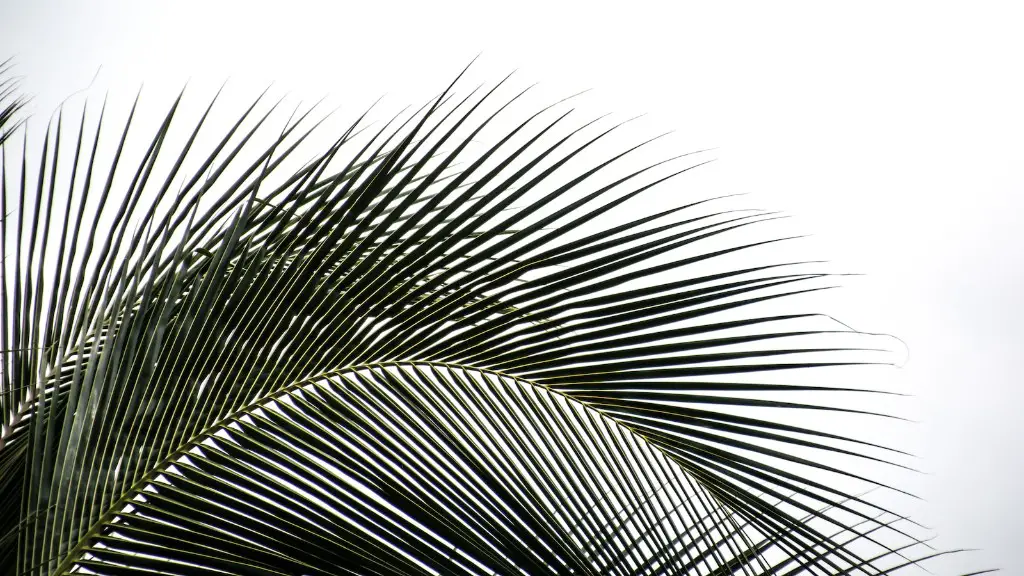Cherries are one of the most popular fruits, and many people have considered growing their own cherries trees. Though it takes some time and effort to care for a cherry tree, you can easily produce lots of cherries each year if you know what you’re doing. In this guide, we’ll provide an overview of how to grow a cherry fruit tree including important tips related to planting and caring for a cherry tree.
When it comes to finding a cherry tree to plant, the best option is to get a species that’s native to your area. Most species of cherry tree require cold winters and mild summers, though there are also varieties that can be grown in more tropical climates. It’s best to talk to a local nursery about which cherry tree would perform best in your area.
Once you’ve picked out a cherry tree, it’s time to plant it. You’ll need to choose an area that gets plenty of sunlight, as cherry trees need lots of sun to produce strong foliage and lots of cherries. The area should also be free of any large rocks or trees, as these can block sunlight and interfere with the growth of your tree. Dig a hole that’s wide enough and deep enough to accommodate your tree’s root ball, and then cover the roots with soil once you’ve placed your tree into the hole.
When it comes to watering your cherry tree, it’s important to monitor its water needs. Most cherry trees need about one inch of water per week in the early stages of growth. It’s best to water your tree early in the morning, so that it has plenty of time to absorb the water before it gets too hot. During the winter, you may want to reduce the amount of water you give your tree, as cherries don’t need as much during colder months.
Another important factor to consider when it comes to growing a cherry tree is pruning. Cherry trees usually require minimal pruning in their early years, though you should remove any dead or diseased branches as soon as possible to ensure your tree’s health. After a couple of years, you may need to do some light pruning to promote air circulation and help the tree stay strong.
Once your cherry tree is producing cherries, you’ll need to be aware of potential pests and diseases. Cherry trees are susceptible to a number of pests and diseases, including caterpillars, aphids, and powdery mildew. If you notice any signs of pests or diseases, it’s important to take action right away to prevent further damage. You can also consider using organic pest and disease control methods if you want to avoid using chemical pesticides.
Finally, you’ll want to keep an eye on the overall health of your tree. Check for signs of stunted growth, mineral deficiencies, and other issues. Also, it’s important to regularly fertilize your cherry tree to ensure that it has the nutrients it needs for optimal growth. If your tree does develop any problems, it’s important to take prompt action to resolve the issue.
Reproductive Requirements of a Cherry Tree
Most varieties of cherry trees require cross-pollination in order to produce fruit, which means it’s important to plant two different cherry trees near each other. This ensures the trees have enough genetic diversity to produce consistent and abundant harvests. It’s also important to keep an eye on cross-pollinators, such as bees and other insects, to ensure they have enough food to stay healthy and help pollinate your trees. Additionally, you should consider avenues to attract more cross-pollinators to your area.
Harvesting Cherries
When it comes time to harvest your cherries, you’ll need to start by checking to see if the cherries are ripe. Many cherry varieties will turn from green to red when they are ready to picked, though some varieties will stay a greenish-yellow. You’ll also need to be aware of birds and other pests who might try to eat your cherries before you do. Consider barriers, such as netting or fences, to keep the birds away.
To harvest the cherries, you should gently twist the cherry off its stem. It’s important to be gentle when harvesting, as cherries are very delicate and can be easily damaged. Once you’ve picked the cherries, store them in a cool and dry place for up to two weeks so that you can enjoy them for several days.
Preventing Diseases
Though diseases are relatively rare when it comes to cherry trees, there are a few preventative measures you can take to protect your tree. Make sure to always water and fertilize your tree properly, and avoid using chemical pesticides. Additionally, you can consider spraying your tree with an organic fungicide to prevent any problems from developing. This can help to reduce the risk of diseases such as powdery mildew.
Wrapping Up
Growing a cherry tree is a rewarding experience, and with the right care and attention, you’ll be rewarded with lots of delicious cherries each year. To ensure your tree grows healthy, make sure to follow the steps outlined in this guide. Choose the right tree for your area, plant it in a sunny spot, and make sure to water and prune it properly.


